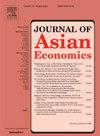Technology transfer in Vietnam's provinces: Insights from a product variety growth model
IF 3.4
3区 经济学
Q1 ECONOMICS
引用次数: 0
Abstract
This study proposes an endogenous growth model to demonstrate the benefit of FDI inflows and their related technology transfers on economic growth and then conducts empirical studies via growth regression by focusing on provincial-level data of Vietnam. The model explains how FDI inflows enhance the technological level of the host country. The effect of FDI inflows is expected to yield economic growth in the long run via technology transfer. The role of domestic firms also is illustrated in the theoretical model, which aims to produce intermediate goods for MNCs. These intermediate goods producers benefit when they collaborate with the MNCs. For robust consideration, this study uses four methodologies to build the empirical models: Pool OLS, Pool 2SLS, RE-GLS, and system GMM. The results illustrate the significant effect of FDI and other macroeconomic variables in the provinces of Vietnam. Using the provincial level data of Vietnam, this study provides evidence for the spillover effect of FDI inflows to the local technology level in the theoretical model. The Vietnamese policymakers can base our empirical results on building necessary policies. The policy which supports the MNCs with high-tech investment or the intermediate goods producers can be considered.
越南各省的技术转移:来自产品品种增长模型的见解
本研究提出内生增长模型,论证FDI流入及其相关技术转移对经济增长的效益,并以越南省级数据为研究对象,通过增长回归进行实证研究。该模型解释了FDI流入如何提高东道国的技术水平。外国直接投资流入的影响预期将通过技术转让带来长期的经济增长。国内企业的作用也在理论模型中得到说明,该模型旨在为跨国公司生产中间产品。这些中间产品生产商在与跨国公司合作时受益。为了稳健考虑,本研究采用四种方法构建实证模型:Pool OLS、Pool 2SLS、RE-GLS和system GMM。结果表明外商直接投资和其他宏观经济变量对越南各省的影响显著。本研究利用越南省级数据,在理论模型中为FDI流入对当地技术层面的溢出效应提供了证据。越南决策者可以将我们的实证结果建立在制定必要政策的基础上。可以考虑对高科技投资跨国公司或中间产品生产企业的扶持政策。
本文章由计算机程序翻译,如有差异,请以英文原文为准。
求助全文
约1分钟内获得全文
求助全文
来源期刊

Journal of Asian Economics
ECONOMICS-
CiteScore
4.70
自引率
9.40%
发文量
90
期刊介绍:
The Journal of Asian Economics provides a forum for publication of increasingly growing research in Asian economic studies and a unique forum for continental Asian economic studies with focus on (i) special studies in adaptive innovation paradigms in Asian economic regimes, (ii) studies relative to unique dimensions of Asian economic development paradigm, as they are investigated by researchers, (iii) comparative studies of development paradigms in other developing continents, Latin America and Africa, (iv) the emerging new pattern of comparative advantages between Asian countries and the United States and North America.
 求助内容:
求助内容: 应助结果提醒方式:
应助结果提醒方式:


